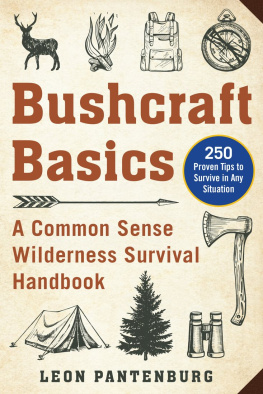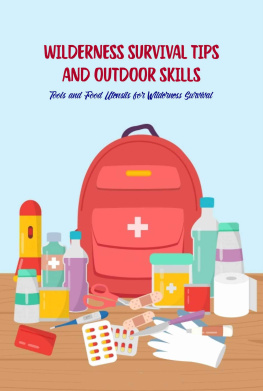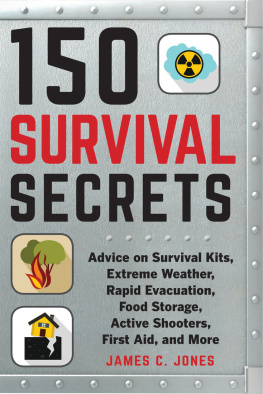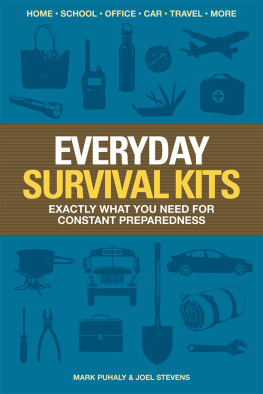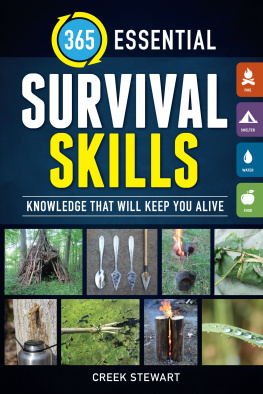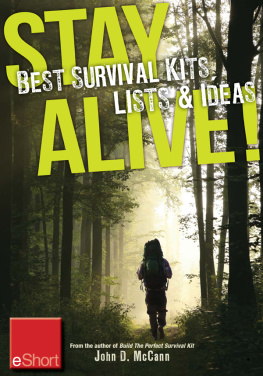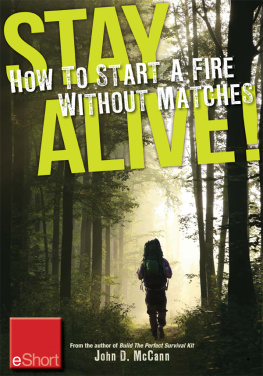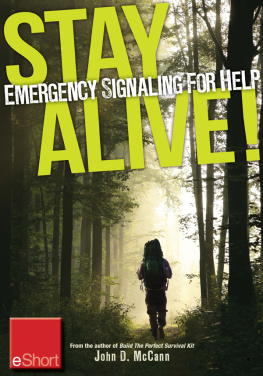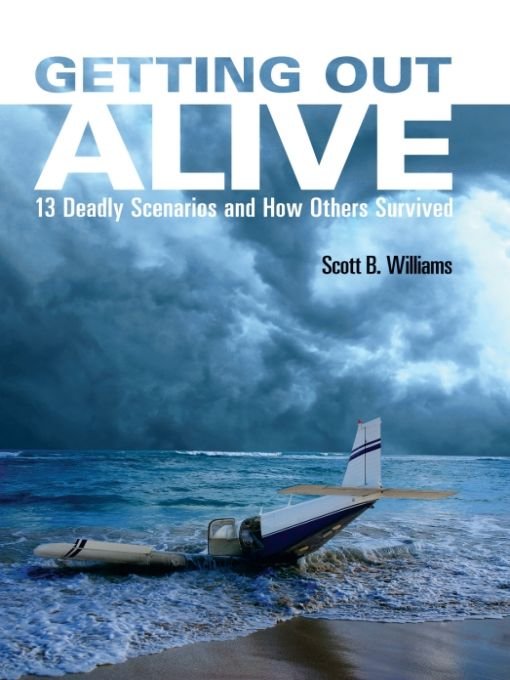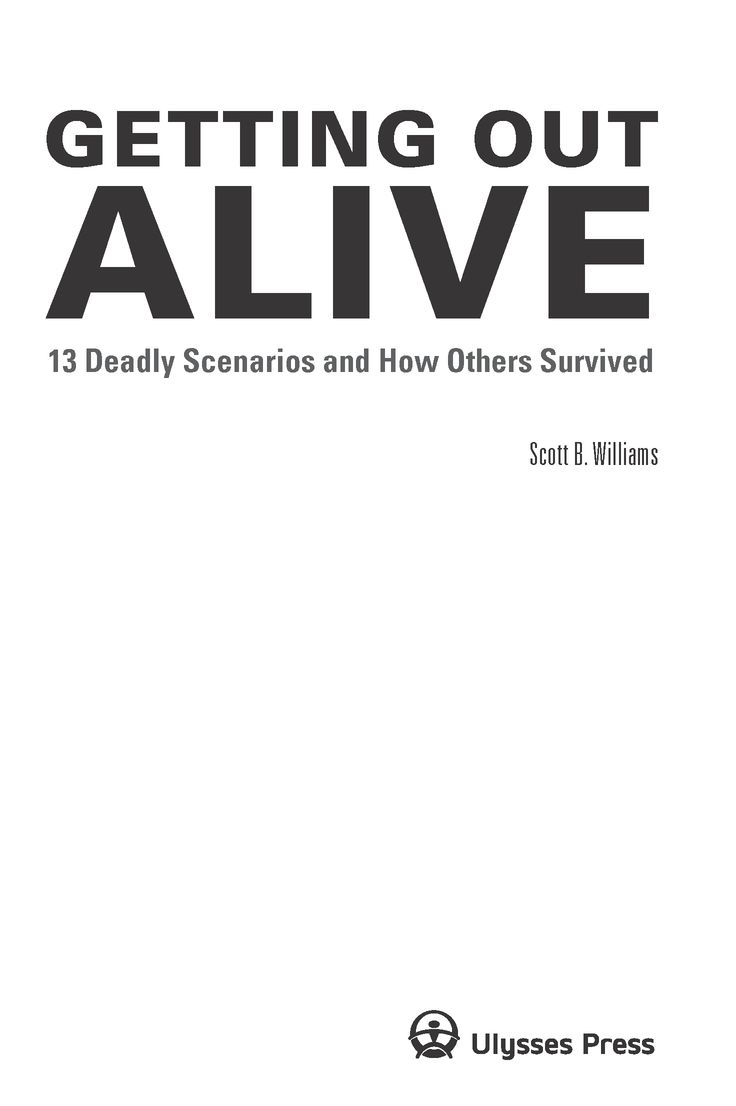Table of Contents
For my sister, Jennifernever one to run from a storm.
INTRODUCTION
Do you have what it takes to make it through an extreme survival situation? Do you have survival knowledge, skills, and experience? Do you have self-confidence, perseverance, and most importantly, an indomitable spirit coupled with the burning desire to live that will enable you to overcome severe adversity? If so, there is a good likelihood that you are a survivor. But you may never know for sure until you are put to the test in a real-life scenario.
Weve all seen the evening news stories, television documentaries, and movies, and read the books and newspaper or magazine articles about survivors who somehow overcame seemingly impossible odds and lived to tell about it. People end up in extreme survival situations for all sorts of reasons, ranging from those who deliberately seek out adventure to ordinary people going about their everyday lives who happen to find themselves in the wrong place at the wrong time. In many cases, one or two simple mistakes or accidents can quickly throw you into a life-or-death struggle. Sometimes the situation happens through no fault of your own and theres nothing you could have done differently other than stay at home and play it safe, but even at home there are no guarantees that trouble wont come knocking at your door.
Some of the scenarios in this book, like getting lost in a jungle or marooned on an uninhabited island, may seem farfetched in todays shrinking world where there are no more great unknowns and communication signals can be bounced anywhere via satellites. A glance through the pages of adventure magazines like Outside, National Geographic Adventure, Backpacker, or Cruising World might lead you to believe that in even the most remote locales on earth youre bound to run into a group after group of well-to-do adventure travelers, ecotourists, and others crowding the last rain forests, uninhabited islands, and unclimbed peaks of the globe. I believed this, too, until I started exploring such places on my own. The truth is, while such travelers do manage to reach many of the most unlikely places, they are there only a tiny percentage of the time. There are still vast stretches of trackless forests where you can vanish without a trace, as well as roadless deserts and windswept island beaches where you can meet your end with no one to know, leaving your bones to bleach in the sun, undiscovered for decades or more.
The oceans of the world are still an irresistible lure to adventurers, sportsmen, and those who earn their living there on vessels of every size and description. The sea has always claimed a small percentage of those who venture over the horizon into its emptiness; small boats and ships alike are sometimes swallowed up without a trace, and this is not likely to ever change. And natural disasters such as hurricanes, blizzards, and forest fires can bring the fury of nature to even the most civilized and tamed places, so that even those who avoid adventure at all costs can find themselves in a struggle for their lives that quickly strips away the comfort of technology that usually wraps them in an illusion of safety.
This very technology that shields us from nature can be the cause of some survival scenarios, as it puts us in unnatural places like a speeding jet airliner on a collision course with the ground or 40 stories high in a man-made building that has caught on fire. Technology allows us to explore places previously off-limits to humans, like the undersea world and the highest mountain peaks, but in such an environment the equipment is the only thing keeping us alive. And in other situations, the technology that keeps us safe from threats can be used the wrong way, enabling one mentally disturbed person to wield the power of life or death over many more people than he could affect without it.
As a lifelong adventurer myself, Ive sought out experiences and wild places in enough ways that I could have feasibly ended up in any of the scenarios described in this book. Ive hiked, paddled, or sailed in environments as varied as rain forests, deserts, remote islands, the Alaska bush, and the open ocean. Living in south Mississippi and parts of Florida most of my life, Ive been dodging hurricanes since Camille came straight over my familys house when I was five. And like most anyone reading this book, Ive flown countless times on a variety of aircraft, placing my trust in aviation technology, and have been in tall buildings and crowded shopping malls where anything could happen at any time. I picked the 13 deadly scenarios detailed in this book because Ive often thought about how easily I could end up in such a situation, and because each is an extreme example of how bad things can get in a hurry, changing a normal day or even an already adventurous outing into a fight for life itself.
The subject of survival is more popular than ever these days as we are bombarded by nearly instantaneous news reports from all over the world about disasters, accidents, and terror attacks. People are fascinated by survival how-to books and television shows, as well as accounts of those who have had close calls and lived to tell about it. Much of this fascination is undoubtedly fueled by our natural fears and the fact that none of us will survive life in the end. We have a need to know how other people have fared when faced with the things that frighten us the most, and what they did that caused them to either survive or fail the test and die. Recent books on the psychology of survival, such as Ben Sherwoods The Survivors Club and Laurence Gonzaless Deep Survival, have explored this fascination in depth. Both of these books also analyze the role of attitude and willpower in determining the outcome of extreme survival situations, and both authors conclude that the mental aspect of survival is far more important than learned skills, experience, or available tools. This explains many cases of quite improbable people living through experiences that have killed their stronger and more knowledgeable counterparts. In other words, the most important survival tool at your disposal is right between your ears.
But despite the fact that survival is mostly about attitude, inner strength, faith, and no small amount of luck, people interested in the subject are still fascinated with collecting the latest survival gadgets and learning the physical skills, like navigating, fire and shelter building, and foraging for wild foods. They want to imagine that they would stand a better chance because they are more prepared than the average person, and because they have studied a variety of survival scenarios in hopes they will know what to do if the time ever comes.
It is because of this hunger for survival knowledge that I am presenting these 13 deadly survival situations, along with a plausible course of action that you might take to get yourself out of each of them. Im writing these from your point of viewhow you might have ended up in each of these tight spots and what you might do to survive them. As you read through each scenario, you might smugly think, I would never be stupid enough to do that! Attempt to drive over a mountain pass in a snowstorm? No way! Get lost in the Amazon jungle? I wouldnt go there in the first place! Trapped under a rock in the mountains? I know better than to go hiking alone! A close call with a forest fire? I would leave the area at the first sign of smoke! Looking in from the outside and critiquing the actions of those who have lived or died in real-life situations, we can make such comments about any such scenario. But no matter how careful you are to avoid danger and how much you know about staying safe, there are always circumstances and factors that you cant plan for or that change faster than you can react.


